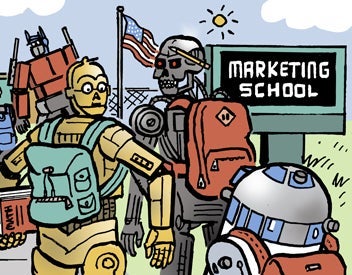What makes a winning promotion? What goes into a campaign that builds sales and market share beyond all reasonable expectations, contributes to brand values, and wins top awards in competitions?
If you were expecting to find an easy answer here, sorry. There are no simple answers. The difference between very good and outstanding is as fine in promotion marketing as it is in world-class sport.
The winning campaigns in the 1998 ISP Awards offer a few clues. The ISP Awards are Britain’s equivalent of the Reggies. They are organized annually by the Institute of Sales Promotion – the U.K. professional organization that encompasses clients, agencies, suppliers, and fulfillment houses.
This year the winning ingredients amount to a simple proposition, a sense of humor, a dash of originality, close integration with advertising, selective use of borrowed values, targeted communication, and great business results.
Clorets was this year’s big winner. The company offered consumers a free curry dish when four people dined at any one of 350 Indian restaurants nationwide. Clorets wrappers displayed details of the offer and invited consumers to mail in for guides containing information about the participating restaurants. To create awareness, participants displayed point of sale materials for six months and distributed Clorets samples to customers. It was an elegant but simple way to get across the brand’s ability to combat bad breath.
The notoriously quirky British humor was in evidence among winners. The best leisure promotion was “Free Trollies,” offered in pubs by Boddington’s Gold beer. In translation, “trollies” are men’s underwear – in this case as worn by the presenter in the brand’s TV commercials.
Mixed with the quirkiness, there were flashes of true originality – like turning a car into a fish tank to gain attention for the new Ford Ka. A nationwide road show was built around the Ka aquarium to build awareness, collect data on prospects, and sign up test drives. Local press headlines like “Funny Place to Park the Carp” all helped hype the campaign through its 20-week tour that took in some of the country’s most exclusive restaurants and stores.
Some winners borrowed their appeal from their sponsorship activities or other bought-in properties. Budweiser exploited its heavy involvement in World Cup soccer with its gold-winning promotion in the prize promotions category. The prizes were the most sought after possessions in this country today: tickets to World Cup France ’98. That’s an offer to kill for – so it should be no surprise that consumers were prepared to buy Bud for it! The winning mechanism was also impressive – a soccer ball inflated out of the winning cans when the can’s ring was pulled.
Well targeted direct mail was also featured in many of the winning campaigns. Honda won best new product launch for its work on the CR-V, a four-wheel drive car with a fridge and picnic table and to which (trust me on this) a shower can be attached. This model was targeted at drivers in their twenties who were undecided between a fun sports convertible and an off-roader. The finely targeted group received four successive and distinctive mailings: an ice cube mold, a salt and pepper pot, a sponge and finally, a Ray-Ban sunglasses case with the message that the glasses could be collected at the showroom when they came in for a test drive.
Finally, it has to be said, size might not matter, but results sure do. Every entry’s success was well-documented. Among the most impressive were the results for the winner for promotional exploitation of sponsorship where Wella’s Experience hair care brand ran away with the category for a campaign based around the hit TV series Friends. The promotion offered a prize trip to New York for four and pulled in more than 700,000 new consumers for the brand, lifting the brand to an all-time high as sales rose 200 percent and brand share by 270 percent.
 Network
Network

